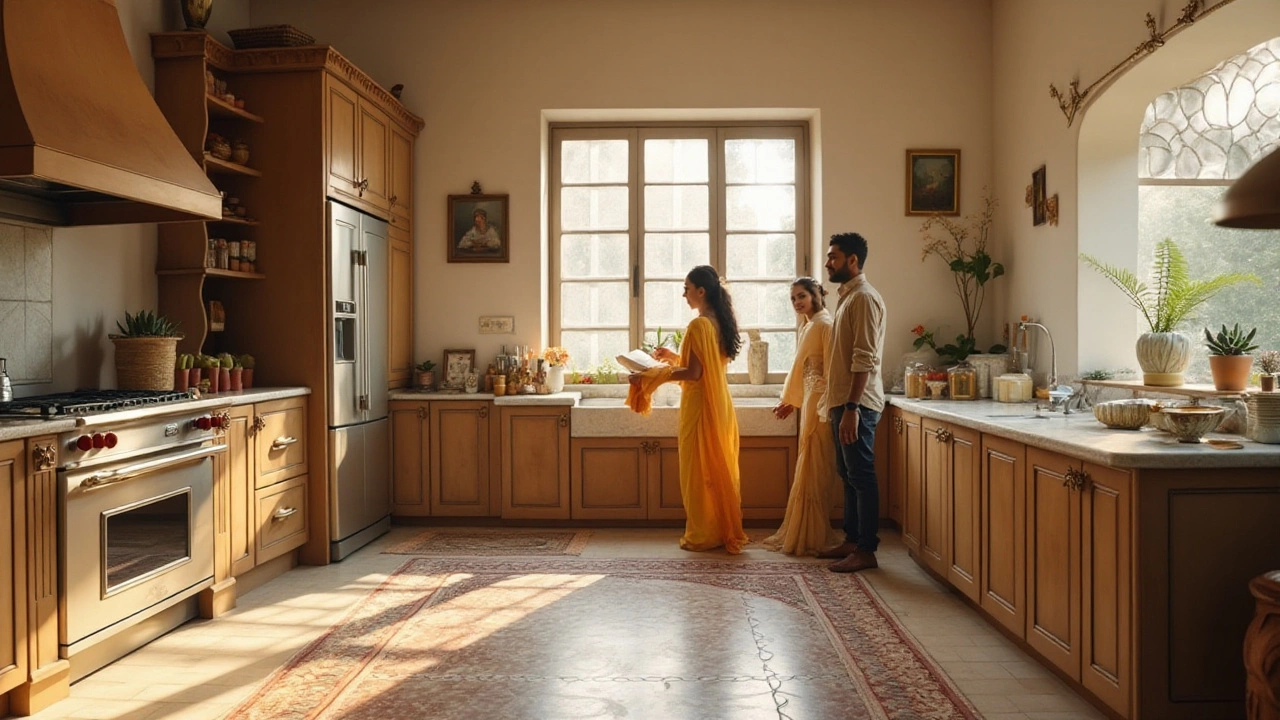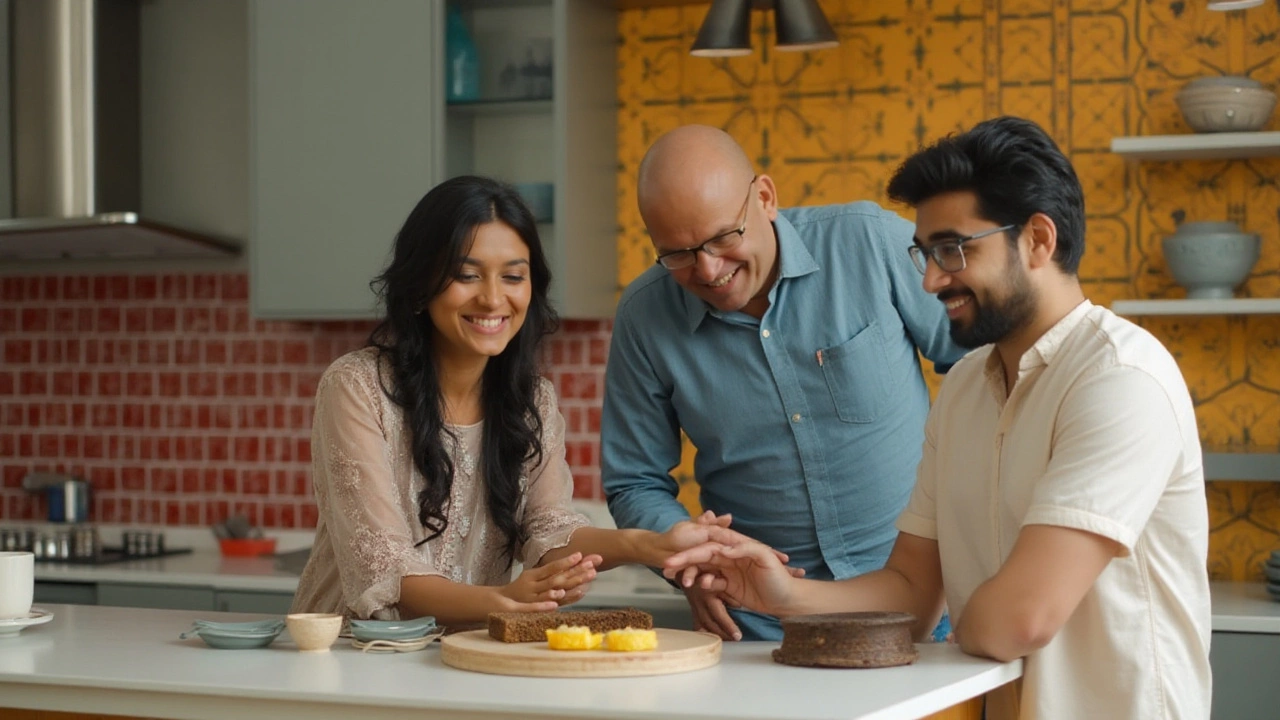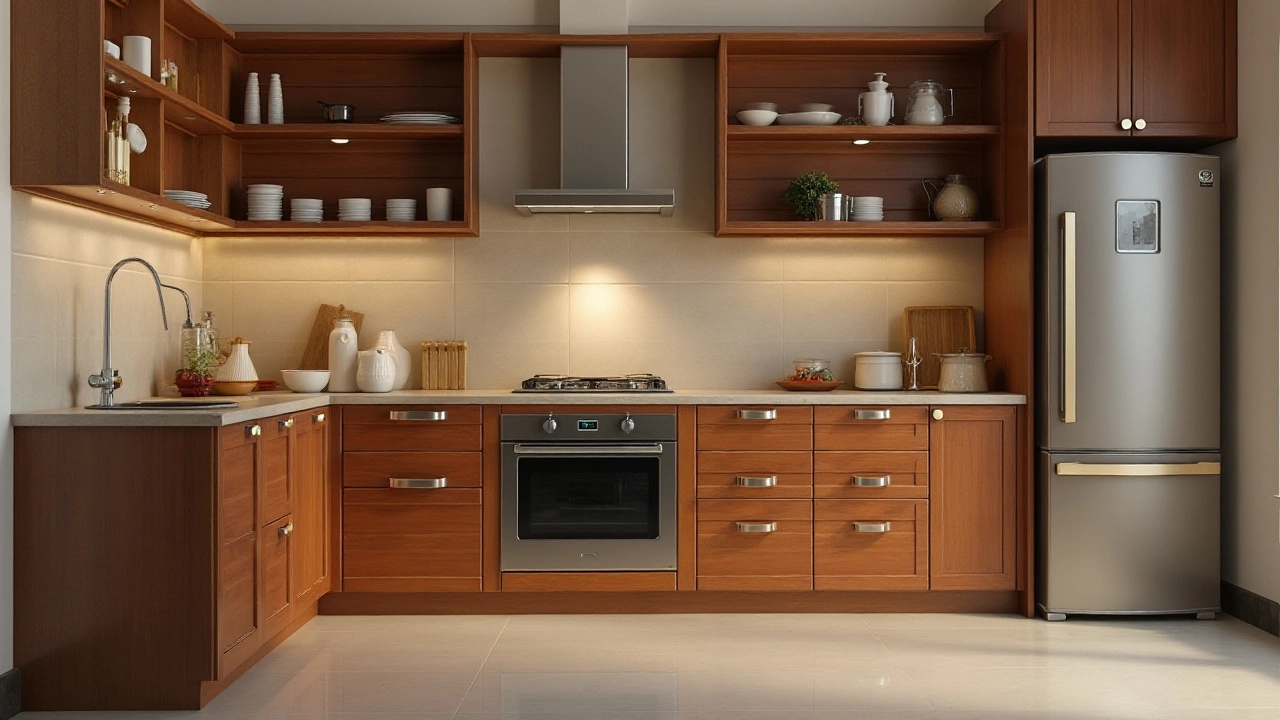The kitchen, often called the heart of the home, presents unique design challenges. One common question is whether the stove and refrigerator should be placed side by side. While doing so can save space, it can also influence how well these essential appliances perform and how safe they are to use together. Understanding the intricate balance between form and function is key when planning an ideal kitchen layout.
This article will guide you through the pros and cons of positioning your stove next to your refrigerator, as well as offer insights into creating a harmonious space that looks great and works efficiently. Whether you're embarking on a full kitchen remodel or a simple layout tweak, knowing the impact on efficiency, safety, and aesthetics will be invaluable.
- The Impact on Appliance Efficiency
- Safety Considerations in Kitchen Design
- Design Aesthetics and Practicality
- Tips for Optimizing Kitchen Space
The Impact on Appliance Efficiency
The placement of kitchen appliances, such as the stove and refrigerator, can significantly influence their efficiency. These two appliances operate under entirely different principles. The refrigerator works tirelessly to keep groceries cool by extracting heat, while the stove, quite opposite, generates heat for cooking. A neat equation of chaos arises when they are placed next to each other. The heat from the stove can make the refrigerator's compressor work harder, which increases energy consumption. This isn't merely a theoretical issue. According to the U.S. Department of Energy, refrigerators can use up to 15% more energy when adjacent to heat sources. This means higher utility bills and potentially more maintenance expenses due to excess wear on the fridge's cooling system.
Given these concerns, how often should one prioritize space over efficiency, and under what circumstances? Let’s dive into the contrasting perspectives. Traditional wisdom in kitchen design suggests positioning appliances to maintain a work triangle – a layout believed to optimize the flow between the sink, stove, and refrigerator. Modern kitchens, however, often grapple with space constraints and unique design elements that could disrupt this geometry, leading some to place the stove and refrigerator side by side. This choice, though sometimes unavoidable, might lead to several unintended consequences. Rising household electricity costs provide a pertinent point to consider. Appliances that overstrain themselves can lead to greater energy usage, and in certain regions, this could compound into a noticeable financial impact across seasons.
The Hidden Costs of Misplaced Appliances
Beyond energy efficiency, this setup can adversely affect the longevity of both the stove and the refrigerator. The heat transfer can cause refrigerator seals to weaken, piping to wear prematurely, and even lead to food spoilage during the warmer months. Frequent exposure to excessive heat might decrease the unit's lifespan, burdening homeowners with premature replacements. According to recent studies, broken seals and scorched surfaces have led to increased repair claims in homes with heat-sensitive placements. Consider an in-depth case study of common urban apartments, where a premium is placed on maximizing every single square inch. When placed closely, appliances must contend with external factors such as cabinet clearance and ventilation. A poorly ventilated refrigerator or stove can trap heat, compounding inefficiency. Thus, it's vital to allow for proper airflow around the appliances, either by slightly spacing them or using insulating panels between them."It's not just about personal preference; energy efficiency translates to economic efficiency for households," noted Jessica Green, a sustainability consultant. "Rearranging your kitchen's major appliances could optimize both. By reducing excessive strain resulting from incompatible proximity, you could extend the life expectancy of your units and save money in the process."
Understanding the complexity of these appliances is crucial. While manufacturers continue to enhance energy ratings and optimize designs, the kitchen layout ultimately dictates how much or little these advancements come to fruition. In certain situations, introducing energy-efficient models is advisable when relocation isn't an option. Yet, finding thoughtful design alternatives or venting solutions can help mitigate these issues effectively. Thus, if making more space is on your kitchen remodel checklist, embracing a holistic approach by considering efficiency by design could redefine the utility of your cooking and cooling spaces. This means exploring possibilities beyond traditional constraints, ensuring both form and function synergize to your advantage.

Safety Considerations in Kitchen Design
When designing a kitchen, safety should be at the forefront of every decision, particularly when it comes to placing major appliances like the stove and refrigerator. One primary concern is the risk of heat transfer from the stove to the refrigerator. Refrigerators work by removing heat from the inside, and if they are constantly exposed to additional heat from a close-by stove, it can lead to increased energy consumption and potential appliance failure. Keeping a buffer space between these two appliances is not just a design choice; it's a preventative measure against overheating and costly repairs.
The importance of proper ventilation cannot be overstated when considering kitchen safety. A kitchen design that overlooks the necessity for airflow can create hotspots resulting in potential fire hazards. Ensure that both the stove area and the fridge have enough space around them to allow heat to dissipate effectively. Using heat-resistant materials for cabinetry and walls near the stove can further mitigate safety risks. This approach not only preserves your appliances but also safeguards the overall structure of your kitchen.
Electrical and Gas Safety
In addition to heat management, electrical and gas safety is paramount. Mixing water and electricity is a notorious hazard, yet many kitchen layouts inadvertently place appliances like refrigerators near sinks due to space constraints. While placing a refrigerator next to a stove might seem efficient, it's important to remember the potential need for simultaneous repairs on heat-producing and cooling systems from the same proximity. It's critical to have separate circuits for heavy-duty appliances to prevent overloading your home's electrical system, thus avoiding power outages or even electrical fires.
Gas stoves, in particular, require additional vigilance. A gas leak in a poorly ventilated space can result in fumes building up to dangerous levels. Ensure any kitchen design involving gas appliances includes easy access for shutting off gas valves and regular checks for wear and tear. Proper signage and instruction on the use of gas appliances are often recommended by safety experts.
"A well-ventilated kitchen with clear pathways between appliances not only improves functionality but also drastically reduces the risk of accidents," suggests the National Kitchen and Bath Association.
Lastly, consider emergency access: Are fire extinguishers, smoke detectors, and gas detectors easily accessible to handle potential kitchen mishaps? Planning your kitchen layout with these safety tools in clear view and reach can make all the difference in preventing a small issue from escalating into a disaster. By maintaining a keen focus on these safety considerations, homeowners can enjoy a kitchen that is not only stylish and functional but also a secure haven for all culinary adventures.

Design Aesthetics and Practicality
When contemplating the layout of your kitchen, the allure of sleek and smart design can often overshadow the need for everyday practicality. The positioning of major appliances like the stove and refrigerator is not merely a functional decision; it's a key element of your room's visual harmony. A kitchen ought to flow naturally, guiding movement effortlessly to make cooking a joyful experience. Aesthetics play a significant role in setting up this visual pleasure but must be balanced with practicality to ensure the kitchen not only looks good but works well too.
The common notion that spaces must be both beautiful and functional is especially true in kitchen design. Creating a stunning kitchen doesn't mean compromising on usability. One popular configuration dilemma is whether the stove should be placed next to the refrigerator. This decision can shape the kitchen's entire look and feel. Placing both appliances close together might create a seamless line, enhancing visual continuity. However, it can also disrupt the so-called 'kitchen work triangle'—a principle that historically emphasizes efficient layouts by minimizing the walking distance between the sink, stove, and refrigerator.
Balancing Beauty with Flow
Balancing the visual appeal with the kitchen's workflow can be challenging, yet deeply rewarding. Design aesthetics urge us to align everything neatly, often suggesting a tight, compact layout; while practicality begs for breathing room, ensuring that spaces are easy to clean, move around, and work in. Studies reveal that an efficient kitchen reduces time spent on meal preparation by 30%, simply by strategic placement of core appliances. This underlines the intrinsic value of practical design.Moreover, the aesthetic choice of finishes and colors plays a significant role in how the combination of a stove and a refrigerator appears. Glossy white or metallic gray can blend seamlessly into a modern kitchen, creating a unified visual scheme. It's about selecting materials and tones that reflect light well and maintain the kitchen's overall bright and airy feel.
"Design is not just what it looks like and feels like. Design is how it works." - Steve Jobs
Integrating these factors, homeowners might feel the tension between a beautifully cohesive kitchen and one that offers the best functionality. Choosing thoughtfully does mean careful deliberation. Making small but impactful choices—like using integrated appliances or panel-ready models—allows the kitchen to transform itself into a piece of art that remains undeniably functional. It's about designing a space where aesthetics don’t override practical needs, but rather enhance them to create not just a kitchen, but a living space.

Tips for Optimizing Kitchen Space
Designing a kitchen that maximizes space efficiency while accommodating essential appliances such as your stove and refrigerator can seem like a challenging task. However, with a few thoughtful strategies, you can create a layout that harmonizes functionality with style. To start, consider adopting the work triangle principle, which optimizes kitchen flow by ensuring that the stove, refrigerator, and sink form a convenient triangle. This approach can reduce unnecessary steps when preparing meals, making your kitchen more efficient.
Another practical tip is to use vertical space creatively. Installing shelves or cabinets that reach up to the ceiling can provide additional storage without compromising countertop space. Drawers beneath countertops can also be a clever way to store utensils and small appliances, keeping surfaces clear and organized. In more compact kitchens, consider multi-functional furniture, like an island that serves as both a preparation area and dining space.
Lighting is often overlooked but plays a crucial role in optimizing kitchen space. Adequate lighting makes a kitchen feel more expansive and welcoming. Under-cabinet lighting can brighten up preparation areas without taking up extra room, while pendant lights over an island can add style and focus. Including natural light sources, such as windows or skylights, can also enhance the mood and atmosphere of the kitchen.
When selecting cabinetry, opting for lighter colors can make a kitchen feel more open and spacious. Glass-front cabinets can add a sense of depth and openness to a tight space. If your kitchen layout allows, a mirrored backsplash can reflect light and create an illusion of a larger room.
In small kitchens, every inch counts, so consider employing pull-out storage or sliding pantry solutions to access items tucked deep within cabinets without cumbersome reaching or awkward maneuvers. Wall-mounted racks for herbs, pots, and pans can also free up valuable space while adding a personal touch.
Expert kitchen designer Jane Smith once noted,
"The most efficient kitchens are ones where every detail serves a purpose, creating a seamless workflow that feels as good as it looks."Taking this wisdom to heart, incorporating innovative solutions such as integrated appliances that blend seamlessly with cabinetry can provide a sleek look while optimizing every corner of your kitchen.





